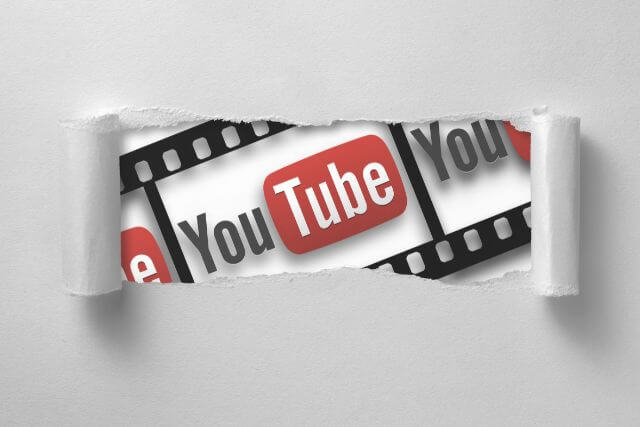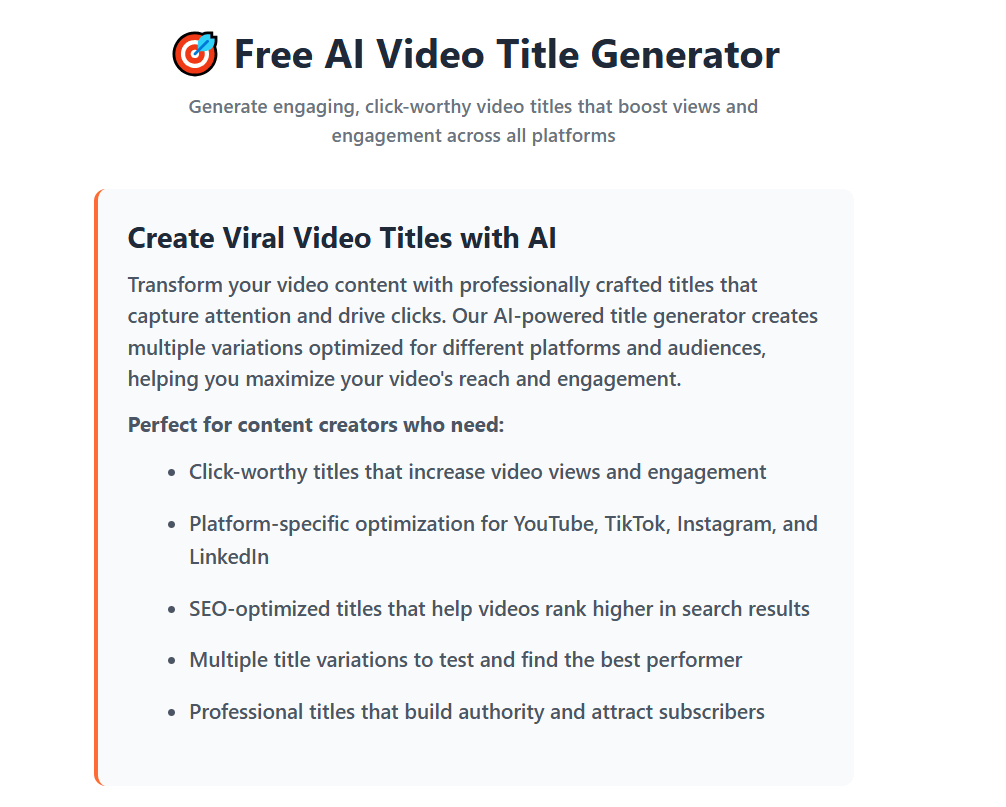



A high-quality video can fail to attract views if its title doesn’t capture attention. Your YouTube title is more than a headline—it’s a strategic entry point. It informs, entices, and helps YouTube understand what your content is about.
This article lays out actionable insights on YouTube titles best practices to help you write headlines that perform well in search and boost engagement without resorting to hype or shortcuts.
Titles influence both viewer behavior and algorithm performance. Without a compelling title, even professionally produced content might go unnoticed. Let’s break down why a title holds so much power.

Effective YouTube titles blend creativity and strategy to enhance visibility and viewer engagement. The right title improves click-through rates, search rankings, and perceived video value by being clear, relevant, and algorithm-friendly. Proven techniques ensure videos are discovered and viewers understand their worth.
These practices not only help your videos get discovered but also ensure that your audience knows exactly why your content is worth their time. Let’s break down these practices and how to use them effectively:
Leading with your most important keywords makes your title more relevant to YouTube's search engine and easier for viewers to scan. For example, instead of writing “Here’s how you can improve your thumbnails,” a stronger title would be “Thumbnail Tips to Boost YouTube CTR.” Viewers are more likely to click when they see relevant search terms right away, and YouTube will more confidently match your video to those searches. This method is especially effective for ranking in competitive categories like tutorials, product reviews, or educational content.
Lengthy titles might seem like an opportunity to cram in keywords, but they’re often counterproductive. Most users browse YouTube on mobile devices, where long titles are truncated. Keeping your title under 60 characters ensures it remains fully visible on all screens. Shorter titles are also cognitively easier to process, allowing users to make a faster decision to click. A concise, information-rich headline is far more effective than a cluttered or ambiguous one.
Words carry psychological weight. Power words like “secret,” “simple,” “proven,” or “ultimate” grab attention and suggest that your video contains valuable or exclusive insights. Emotional triggers, such as “fail,” “mistake,” or “success,” appeal to fears or aspirations. These tactics are especially powerful when targeting creators, entrepreneurs, or learners seeking improvement. Used sparingly and sincerely, they add urgency and relevance to your title.
Examples:
Curiosity is powerful, but misleading titles can backfire. Your goal should be to spark interest without deceiving the viewer. Viewers need to trust your titles reflect your content accurately; otherwise, retention drops, and so does your video’s performance. Good titles promise insight or surprise while staying honest. Instead of exaggerating results, preview the benefit or outcome your video delivers. Think of it as ethical intrigue.
Compare:
Numbered titles signal structure and clarity. They suggest the content will be broken down into manageable parts, which is appealing to users skimming through results. Lists also imply actionability—viewers expect takeaways, steps, or rankings. Research from Conductor shows that titles with numbers outperform others by up to 36%. The digit “7” is particularly effective, as it’s perceived as specific yet digestible.
Examples:
Brackets and parentheses add context, which can significantly improve click-through rates. They can indicate who the video is for, what format it follows, or what year the content is relevant for. These elements act like subheadlines, giving the reader additional motivation to click. Brackets are especially useful for evergreen content that’s been updated or when specifying the tutorial type (e.g., [Tutorial], [Beginner Guide], [2025 Update]).
Examples:

Writing a compelling YouTube title doesn't always come easy, especially when you're juggling keyword strategy, audience expectations, and character limits. Fortunately, a range of tools exists to streamline the process and help you write titles that perform.

Success leaves clues, especially on YouTube. If you're serious about improving your titles, studying what works for top-performing channels in your niche (and beyond) is a practical and often underutilized strategy. By identifying patterns in titling style, language, and structure, you can draw insights that inform your own optimization approach—without resorting to copycat tactics.
Spend time analyzing the titles of creators who consistently generate high views, strong engagement, or regular search appearances. Look at:
For example, if a competing creator’s video titled “How I Gained 10K Subscribers in 30 Days [Strategy Breakdown]” outperforms others, take note of the clear benefit (“10K Subscribers”), time-bound appeal (“30 Days”), and bracketed context (“Strategy Breakdown”).
Sometimes the best inspiration comes from outside your category. If you run a tech channel, you may find that educational creators use exceptionally clear titling structures that could apply to your tutorials. Or if you're in lifestyle vlogging, looking at fitness or productivity channels might reveal trends in urgency-driven language or seasonally adjusted topics.
Why this matters:
For example, the phrase structure “X Mistakes New [Audience] Make” works across niches, from finance to fashion to filmmaking.
The goal is to adapt—not adopt. Taking inspiration doesn’t mean copying. Identify what makes other creators’ titles effective, then filter that through your brand’s voice, your audience’s needs, and your video’s unique value.
Ask yourself:
For instance, instead of duplicating a popular title like “Top 10 iPhone Photography Hacks,” you might adapt it to “7 YouTube Filming Tricks That Actually Work (No Expensive Gear).” It follows a similar structure but is tailored to your message and audience.
A: Aim for 55–60 characters to avoid truncation on mobile or desktop. Shorter titles also boost readability.
A: No. Place hashtags in the description. Including them in the title looks spammy and reduces readability.
A: Yes, when used to capitalize the first letter of each word. Avoid all caps unless it’s for emphasis—too much can feel aggressive.
A: Absolutely. Updating your title based on performance data can help improve visibility and CTR over time.
Creating effective video titles is one of the most impactful ways to grow your channel. With competition high, applying YouTube titles best practices ensures your videos have the best shot at being seen, clicked, and watched through.
Here’s a quick recap:
Next Steps:
Audit your existing titles and apply these principles to at least three underperforming videos. Track performance for two weeks and see how optimized titles can lift your channel's visibility.



